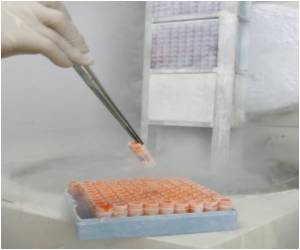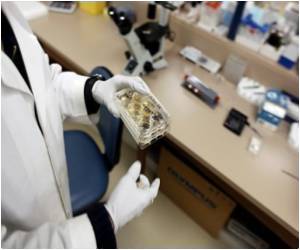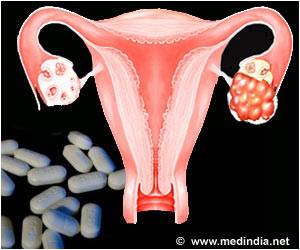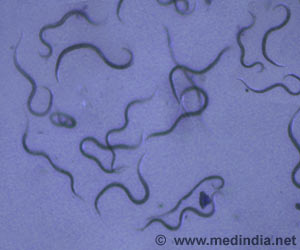
In experiments on mice, the USP scientists were able to effect a 10-fold reduction in the volume of subcutaneous malignant tumors by administering local injections of a plasmid – a circular DNA molecule – containing INXS. The findings were published in the most recent issue of the journal Nucleic Acids Research.
The group headed by Verjovski-Almeida at USP has devoted the past five years to investigating the regulatory role of so-called intronic non-protein-coding genes – those found in the same region of the genome as a coding gene but on the opposite DNA strand. INXS, for example, is an RNA expressed on the opposite strand of a gene coding for a protein known as BCL-X.
"We were studying several protein-coding genes involved in cell death in search of evidence that one of them was regulated by intronic non-coding RNA. That was when we found the gene for BCL-X, which is located on chromosome 20," he explained.
The researcher explained that BCL-X is present in cells in two different forms: one that inhibits apoptosis (BCL-XL) and one that induces the process of cell death (BCL-XS). The two isoforms act on the mitochondria but in opposite ways. The BCL-XS isoform is considered a tumor suppressor because it activates protein complexes known as caspases, which are required for the activation of other genes that cause cell death.
"In a healthy cell, there is a balance between the two BCL-X isoforms. Normally, there is already a smaller number of the pro-apoptotic form (BCL-XS). However, in comparing tumor cells to non-tumor cells, we observed that tumor cells contain even fewer of the pro-apoptotic form, as well as reduced levels of INXS. We suspect that one thing affects the other," the researcher said.
Advertisement
The opposite occurred when the researchers artificially increased the amount of INXS using plasmid expression in a kidney cancer cell line, with the non-coding RNA being reduced. "The pro-apoptotic form increased, and the anti-apoptotic form decreased," the researcher noted.
Advertisement
The researchers repeated the experiment, but his time silenced the INXS gene. They then observed that, even in the presence of ultraviolet light, the pro-apoptotic isoform did not increase and the cells did not die.
The final stage of the study was to verify whether the increase in INXS expression is related to the death of cancer cells in vivo. To do this, the researchers subcutaneously implanted human kidney cancer cells in mice and waited 40 and 60 days for the tumor to reach a volume of 300 cubic millimeters (mm3) and become palpable.
The animals were then divided into two groups: one half began to receive injections of the plasmid containing INXS at the site of the tumor; the other half, which served as the control, received only the empty plasmid.
After 15 days of treatment, the tumors in the control group animals had grown to an average volume of 600 mm3. However, in the group treated with INXS, the average tumor volume measured 70 mm3 – nearly 10 times smaller.
According to the assessment of Verjovski-Almeida, it is possible to develop therapies to fight cancer that are able to increase the quantity of INXS in only the tumor cells, and the USP group plans to test some of these strategies in the future.
In a new thematic project, titled "Characterization of the mechanisms of action of long non-coding RNA involved in the programs of gene activation in human cells," recently approved by FAPESP, the group plans to further study the mechanisms through which INXS modulates the BCL-X gene to understand why this non-coding RNA is reduced in cancer cells.
Source-Eurekalert











